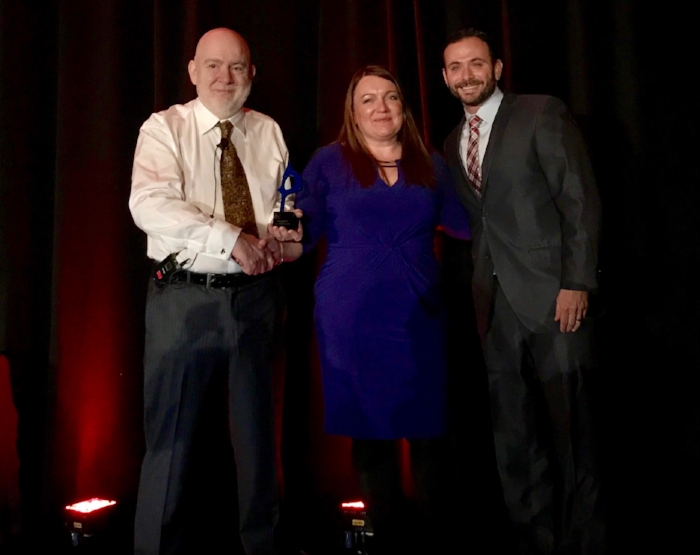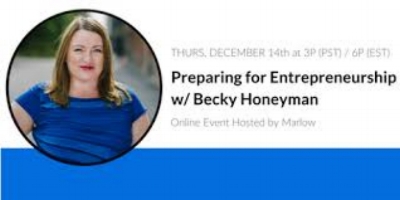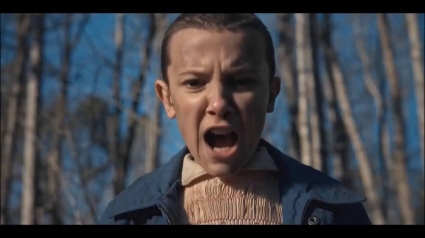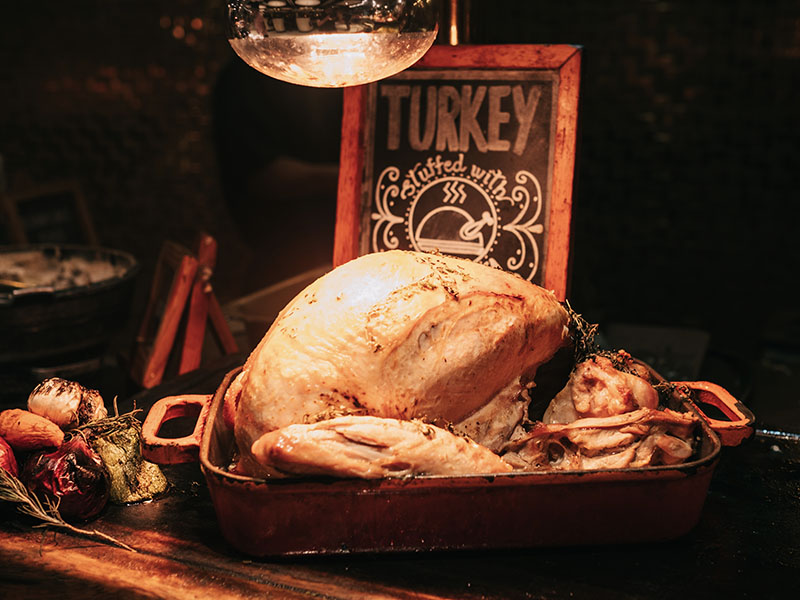SourceCode Wins for MicroMarketing!
SourceCode Communications Wins In2Sabre Awards

Becky and I are thrilled to share that SourceCode Communications won for our work with Hinge in the Micro Marketing category last night at the In2Sabre Awards in New York. To be recognized by the team of judges at The Holmes Report is such an incredible honor. We’re truly humbled.
Our campaign was a virtual pop-up for Hinge which manifested itself in the form of the Milestone Market. We created the first ever digital pop-up that celebrated relationship milestones and couples that met on the app that had reached these milestones could submit win product from brand partners. We wanted to position the brand as actual ‘relationship app’ for millennials while most others were focused on the casual hook up. This campaign’s methodical 5 stage approach ensured credibility, exposed us to millions of partner brands audiences through our build-in partner brand social promotion obligations and ensured we had multiple stories to tell. More than 20 pieces of published coverage provided them exposure to over 615M unique and highly targeted potential customers. We were able to secure 3 executive interviews and the subscribers based on the platform increased 10% during the two week period we were executing the campaign. Prizes sold out within a week and Power Couples has become an ongoing marketing initiative that continues to bare fruit.
Along with the win for Micro Marketing, SourceCode was also shortlisted for Best Agency Marketing and Lean Marketing. This wouldn’t be possible without our inspirational clients who took a risk on us in our early days and our incredibly talented and driven team. Thank you all for the support - it’s been an awesome ride so far. Here’s to many more award nights for SourceCode! Check out the full list of winners HERE.
Preparing for Entrepreneurship
Key Takeaways from SourceCode co-founder Becky Honeyman's Interview with Marlow


Last week, I participated in a Facebook Live interview with Marlow, a career design platform, about launching SourceCode Communications earlier this year with Greg. Entrepreneurism can be a scary undertaking but we’ve been surrounded with endless support. During this process we’ve discovered what an amazing community of entrepreneurs and supporters we have in our network. Because of this experience, I want to give back by sharing the lessons I’ve learned in my career, how I knew it was time to launch a business, and how I prepared for the entrepreneurial leap of faith.
Here are some key takeaways I highlighted in the interview for professionals thinking about taking the leap:
Do your homework. Make sure you really know what you’re getting into, and make sure you have the support - emotional and financial - to be able to do it. There are some many other things to worry about - whether you can pay your rent is not one that should be clouding your judgement. When we decided to start the company, we began by looking at the commercial data - worked out our vision, our commercial goals and really what we wanted to do differently to every other agency. We spent a lot of time working through the financials,the operational stuff, the resourcing as well as the more exciting, creative things like working with designers on logos and websites. And then, we worked out our own financials. Everything we knew about starting your own business told us the fairly decent salaries we had been used to were unlikely in the near term at least so we had to make sure we had enough saved, squirreled away to help us through the early days.
Consider a partner. With my partner, we have a ying/yang thing going on which serves us incredibly well. We’re both enormously ambitious and driven but our skill sets are different and complementary. Where i tend to overthink and overly analytical - always wanting to consider a challenge from every perspective, my partner is much more keen to take a leap. Between us we have a good combination of considered and confident. Even when we drive each other mad, and as opposites we do, it’s so much better to have someone to share your concerns.
Outsource what you can so you can focus on what’s important. When you’re starting a business, you’re not going to want to spend time looking at spreadsheets to determine taxes, experiences, benefits, etc. One of the things I’m most thankful for is finding platforms to help us with accounting and HR functions. Taking those things off our plate has allowed us to concentrate on the business while not having to worry that the business isn’t being taxes correctly or that our first employee isn’t being paid this week.
When Greg and I were first thinking about doing this we spoke with a guy who had set up his own business a year or so ago and I remember asking him at what point you stop worrying. He deadpanned me and said, “You know, it’s a bit like breaking your leg. You heal, but the pain never really goes away.”
At the time I laughed but it’s true. When we talk to industry peers about where we are just a few months in, we are regularly told that we are doing brilliantly but for us it will never be quite good enough. We can always do better.
Starting SourceCode always feels like a good decision especially with our quick growth and early industry recognition.. Even on the crappiest days, I am glad it’s our crappy day.
To see the whole interview, visit Marlow’s video here.
Using PR at Thanksgiving
Tips from a crisis communication professional to help keep Thanksgiving filled with warm fuzzies rather than white hot fury


Many PR pros await Thanksgiving festivities with anticipation—some with dread.
Chock full of over-indulgence, “quality” family time, horrendous travel delays, screaming children and full-contact family brawls, this time of year is intense, exciting, stressful and wonderful all at the same time.
Given that Thanksgiving celebrations of one kind or another have occurred for over 600 years, you would think more people would be prepared for the potential pitfalls endemic in the holiday. Yet, every year everyone forgets the effect that tight time schedules, travel nightmares and forced fun can have on their stress levels.
Don’t fret. Here’s a foolproof guide from your neighborhood crisis communications professional to help ensure this year’s Thanksgiving is filled with warm fuzzies rather than white hot fury.
To read the full piece from SourceCode co-founder Becky Honeyman, please visit PRDaily at https://www.prdaily.com/Main/Articles/23561.aspx
Avoid the scary fate of these brands...
Stranger Things? A roundup of the most spine-chilling PR horror stories of 2017


From things that go bump in the night to a cold spell in the Upside Down, Halloween brings its fair share of spooks and scares. Needless to say, 2017 has already had it’s more-than fair share of PR horror stories. Ghosts, ghouls and wizened-faced witches are nothing compared to the spine-chilling, bone-trembling effect that these PR horror stories have had on us this year.
Let The Right One In
Fewer things gave PR professionals more of a creeping sense of dread than the quickly-pulled Kendall Jenner Pepsi ad.
You can see how it happened - The Women’s March made activism mainstream, millennials were purportedly more engaged and, heaven knows, we could all use a little togetherness versus divisiveness.. It must have looked just great on paper. So why the horror story ending? The sinking sense of dread experienced by most PR professionals as they watched it’s near-shameless lack of authenticity. Most of us predicted the backlash.
For brands looking to confront or take a stand in a controversial topics, you must to do it with bravery and sensitivity or don’t do it at all. The galling thing is that they were almost right, they almost hit the zeitgeist nail on the head but for a few important factors. There was a lot of engagement, protests and marches early this year, and as a result, there were numerous vocal, opinionated and informed individuals who could have given this ad a touch of credibility. Which is why it was all the more confusing that the symbol of unity selected was multi-millionairess, celebrity, Kendall Jenner. A true woman of the people, right? Right….
And then there is the content. What were these people protesting? In a world of #blacklivesmatter #womensmarch and #lovewins among hundreds of other worthy causes, the protesters were all carrying anodyne ‘peace’ and ‘unity’ signs. Very valid ideals but way to miss the point. By trying to remain neutral Pepsi missed an opportunity to really engage in the conversation. As the British would say, ‘they bottled it’ (pun definitely intended).
The Descent
And then, as one horror story ended, a new one began. We all watched with bated breath as friendly skies became threatening, brooding and destructive stormclouds for United. This horror story starts with the really gruesome, violent ending. After the incident, PR professionals watched with rising panic as the airline downplayed the situation, apologising only for having to ‘re-accommodate’ some passengers. Where an apology and evidence of humanity and empathy might have helped United to regain some trust, the airline adopted an ‘I’ll pull the sheet over my head and just wait here until it’s gone’ approach.
Spoiler, this doesn’t ever work in the movies, and it doesn’t work in communications either.
After three days, the team finally peeped out from under the sheet to find the specter still there. Eventually the team realized the only way to take down this particular monster was to face it head on, acknowledging the incident, apologizing and trying, finally, to make the situation right. By then of course, the brand had taken quite the beating both at home and abroad and, according to Fortune, wiped $1.4BN off its stock value.
The Babadook
Everyone’s favorite horror story, and one with enough chapters to inform PR textbooks for years to come, our last tale of fear-filled twists and turns features Uber. From toxic culture allegations to driver pay disputes, and the adventures of a CEO who yelled at his own drivers, the brand pushed the boundaries of what the term ‘PR crisis’ really meant this year.
The real horror for PR professionals was watching the same pattern unfold repeatedly. Like a haunted carousel we saw scandal, denial, crisis, admission... again and again. The really scary thing was the number of times we saw Uber repeat the same missteps, each time tarnishing the brand a bit more. Halfway through the year we saw the rot stopped (at least we hope) when the board stepped up to investigate and address the issue. The resulting change in leadership gives Uber a chance to meaningfully change its narrative, developing thoughtful and sincere initiatives to address previous missteps and move from media demon to darling once more.
There are clear lessons for us all if we wish to avoid the scary fates of these three brands and escape the clutches of a PR crisis.
- Be honest - don’t lie and don’t pretend to be something that you’re not. Feather ruffling is fine when it rings true but fakers are almost always found out.
- If you screw up, own it. We are all human and we all make mistakes. It’s only when we try to pretend those mistakes didn’t happen that a misstep becomes monstrous.
- And speaking of missteps…we have to try to learn from challenges as well as successes as communicators. The most tempting thing to do post-crisis is to move on but this loses an opportunity to make sure we don’t make the same mistakes next time…
Happy Halloween!
Bringing Humanity Back to Brand Marketing
These six brands are leading the way when it comes to bringing humanity back into marketing


In a time when everyone in our industry is chatting about the dawn of AI and machine learning, we want to acknowledge those brands that are working to keep humanity alive in their marketing strategies.
Here are a few of our favorite campaigns that truly demonstrate the best of humanity.
- ALS Ice Bucket Challenge-- This isn’t really a brand campaign (and admittedly from a few years ago) but it’s an amazing example of effective social marketing. When the ice bucket challenge took off in the summer of 2014, videos of social media user pouring freezing water over their heads was all anyone could talk about. It engaged the social media community like nothing anyone had seen before. Supporters ended up raising over $115 million which helped scientists discover NEK1, one of the most common genes that contribute to the disease. What’s more humane than the world working together to raise money to cure a debilitating disease?
- Intel: "Meet the Makers" Series-- Intel's five-part "Meet the Makers" video is a campaign filled with inspirational stories that you wouldn’t necessarily expect to see from a brand. Each video profiles someone from around the world who uses Intel products to help make the world a better place. With this beautiful look at how technology is changing our experiences, Intel successfully brings humanity back into brand marketing.
- Reebok: "Be More Human" Campaign-- Reebok stresses not only physicality but also personal connection and transformation in their long-running campaign which looks at how fitness internally changes people. Yan Martin, Reebok's VP of Brand Management and creative direction, said, “In a world that often tries to make us less human, fitness and physicality has this unique power to help us find our best." By encouraging consumers to transform themselves, Reebok positions itself as the lead cheerleader for those looking to better themselves.
- “Share A Coke” Campaign--Started in 2011, the campaign left behind the traditional Coke logo, and instead replaced it with the phrase "Share a Coke with (insert name)." This has to be one of the best examples of personalization and pathos in recent marketing history. The campaign connects people on a human level with a concentration on sharing and togetherness, something that we don’t often see in the digital world. In 2014, Coke reported their first rise in sales in over a decade demonstrating that consumers clearly appreciated the sentiment.
- Dove: Real Beauty Campaign-- While Dove’s recent advertisement was a little off the mark, their Real Beauty campaign overall was a stroke of genius. Launched in 2004, the campaign aimed to change the conversation about female beauty. Using real, unphotoshopped women, Dove celebrated all different types of women. And to put their money where their mouth was, they also created a fund to partner with Girl Scouts, Boys & Girls Clubs of America, and Girls Inc. to organize anti-bullying workshops and to promote activities of self-love.
- Honey Maid: This is Wholesome Campaign--And last, but definitely not least, is Honey Maid’s campaign that illustrates the beauty of diversity. These spots show that American families come in all different shapes, sizes, and colors with the tagline of “no matter how things change, what makes us wholesome never will.”. Similar to Dove, they are preaching acceptance of all types of humans, which is more important than ever considering the current political climate.
Today’s consumer purchases are not decided upon solely by quality and price but also by the brand’s intent and purpose. These successful campaigns resonated with consumers because rather than promote their products, they made themselves relatable through inspirational stories about what it means to be human.
What’s your favorite brand marketing campaign that demonstrates humanity in the era of tech?




